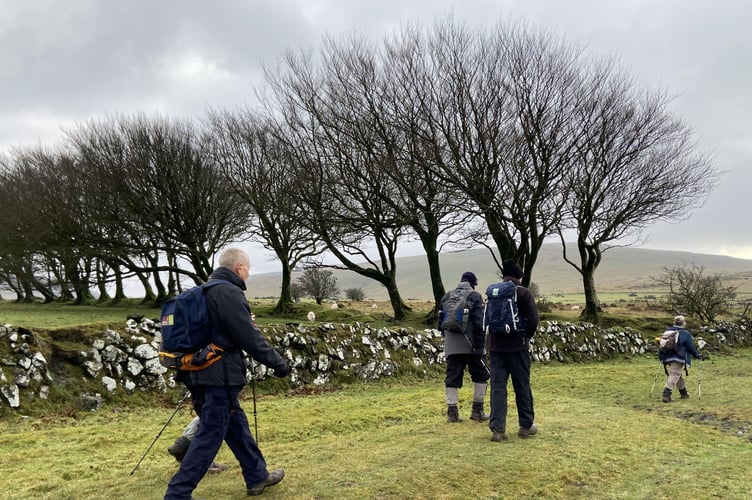It was good to be out on the moor again without the risk of getting drenched and tossed about by Storm Henk.
As a bonus for the 19 ramblers who ventured out for this six-mile walk, members were treated to homemade mince pies and Bakewell tarts.
accompanying the delicious bakes was mulled wine (including a non-alcoholic version for the drivers). What better way to start the new year’s walking season!
It was a cold, dry day with occasional glimpses of sunshine. The route incorporated a little lane walking, but was mostly on moorland tracks and through woodland. Unsurprisingly, the ground was still very wet and boggy in places after the recent downpours.
The walk started at Meldon Reservoir car park. The reservoir was the last of eight reservoirs to be built within the current boundaries of Dartmoor National Park.
In 1970 its construction was begun by the North Devon Water Board (now part of South West Water) after many years of debate and controversy over the choice of site. It was designed to supply water to the city of Exeter and the surrounding areas.
Meldon’s unique feature is its dam, which is often referred to as a concrete cathedral, due to its grand architectural design.
Aggregates from Meldon Quarry were used in the concrete for its construction. Part of the railway, including the viaduct, was converted for use by road vehicles to transport the building materials.
The dam is 200m long and 55.2m at its highest point and was constructed using 270,000 tons of concrete. It holds 300 million litres (nearly 80 million gallons) of water over a surface area of 21.3 hectares (52.3 acres) and has a maximum depth of around 42m. Meldon Dam was opened on 22 September 1974 by the then local MP, Peter Mills. An island towards the south of the reservoir has been planted with trees and developed as a nature reserve. The workings associated with two nineteenth century mines – Forest Mine, situated about halfway along the reservoir, and Homerton at its southern end – are submerged under its waters.
Setting out from Meldon car park the group made their way towards the hamlet of Meldon and on into Meldon Woods where in spring the woodland is carpeted with bluebells and in autumn a wide variety of fungi makes this a haven for mycologists and mycophagists.
Shortly after leaving the wood, the group joined a moorland track which is part of three national trails: The 24-mile Two Castles Trail linking the Norman castles of Okehampton and Launceston, the 117 mile-long Two Moors Trail created in 1976 which links Dartmoor and Exmoor and the Dartmoor Way, which is 108 miles long and circles the perimeter of Dartmoor.
Returning via the reservoir, the group had first to make their way down the heavily contoured lower slopes of Shelstone Tor (thankfully not icy) before negotiating the very boggy area around Vellake Weir where it stopped for a lunch break beside the West Okement river.
The final stretch took the group along the popular path around the reservoir and over the dam.
As ever, new walkers are always welcome. Meet at the post office in George Street, Okehampton on Sunday mornings ready to leave at 9.30am. Please be there in plenty of time so that the group can leave promptly. Next week’s walk will start from Scorhill Farm near Gidleigh. Where possible, we try to share cars though this cannot be guaranteed. You should be suitably attired for all weather conditions, including sturdy footwear and bring a packed lunch.




